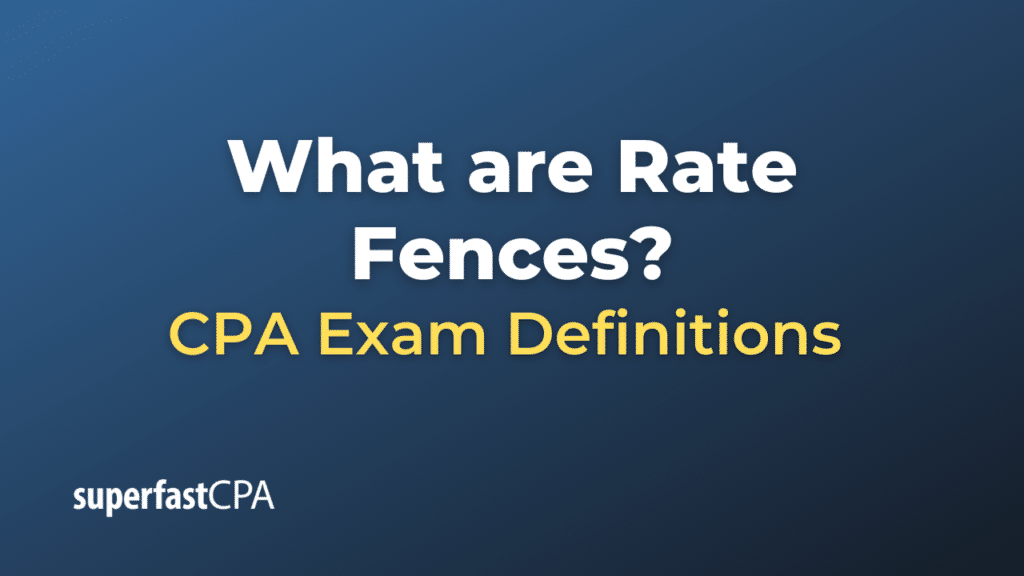Rate Fences
Rate fences are strategies employed by businesses, particularly in the service industry, to differentiate pricing for various customer segments without disrupting the overall market pricing structure. They’re designed to protect discounted or lower-priced service offerings from being accessed by customers willing to pay the standard or higher rate, thus optimizing revenue. In other words, rate fences prevent customers who can and are willing to pay more from taking advantage of discounts meant for other segments.
Rate fences can be categorized into two main types:
- Physical fences: These are tangible or concrete differences in the product or service being offered. For example, different seating classes in an airline – economy vs. business – or rooms with varying views in a hotel.
- Non-physical fences: These are intangible and often relate to differences in terms and conditions of purchase, time of booking, or other similar factors. For instance, non-refundable tickets might be priced lower than refundable ones, or there might be early-bird discounts available to those who book in advance.
Rate fences are essential for businesses to implement dynamic pricing strategies effectively. By having clear rate fences, companies can offer discounts or special rates to certain customer segments (like students or seniors) or under specific conditions (like last-minute hotel room bookings) without cannibalizing their regular sales.
Using rate fences can benefit businesses by:
- Optimizing revenue and profitability.
- Tailoring offerings to cater to different customer segments.
- Encouraging customers to modify their behavior (e.g., booking earlier or during off-peak times) in exchange for better rates.
- Preventing resentment among customers who pay the full price, as they can understand and perceive the value of the higher-priced service they are receiving.
However, for rate fences to be effective, they need to be clearly communicated and understood by customers to avoid confusion or feelings of unfair treatment.
Example of Rate Fences
Let’s use the airline industry as an example to illustrate rate fences.
Imagine an airline offering flights from New York to London. They have various pricing structures, and they use both physical and non-physical rate fences to differentiate between these prices.
- Physical Fences:
- Seating Class: The airline offers Economy, Premium Economy, Business, and First Class seats. Each class comes with its own set of amenities, comfort level, and services. A Business Class ticket comes with a lie-flat seat, exclusive cabin, gourmet meals, and lounge access. Meanwhile, an Economy ticket offers basic seating and in-flight meals. The tangible differences in the service justify the price disparity between the different classes.
- Baggage Allowance: The base ticket price might include only a carry-on, but for an additional fee, passengers can check in luggage. This physical difference in service allows the airline to offer varied pricing.
- Non-Physical Fences:
- Refundability: A non-refundable ticket is cheaper than a refundable one. If a passenger is confident about their travel dates, they can opt for the non-refundable option and get a discount.
- Booking Time: Early-bird discounts may be available for those who book their flights months in advance, while last-minute tickets might be more expensive. Conversely, sometimes airlines might offer last-minute deals to fill up unsold seats.
- Loyalty Programs: Members of the airline’s frequent flyer program might get special rates or deals, encouraging brand loyalty.
- Day and Time of Flight: Flights on Tuesdays or Wednesdays might be cheaper than those on Fridays or Sundays. Similarly, red-eye flights might be priced lower than prime-time flights.
By using these rate fences, the airline ensures that it doesn’t cannibalize its own sales. Someone willing to pay for the comfort of a Business Class seat won’t opt for an Economy seat just because it’s cheaper, due to the clear physical differences in the service. Similarly, someone who values the flexibility to refund their ticket will pay a higher price for that option, while those who are sure of their travel dates can save money with a non-refundable fare.













